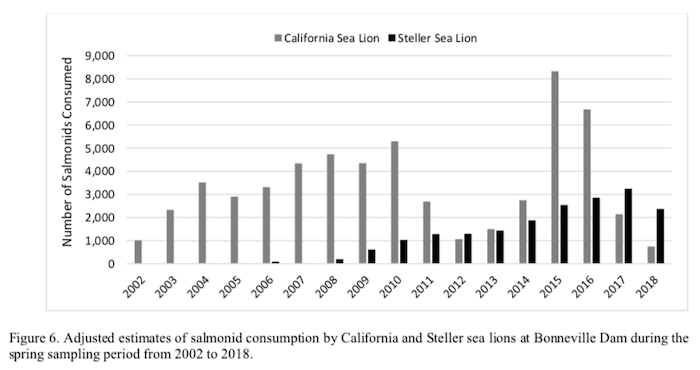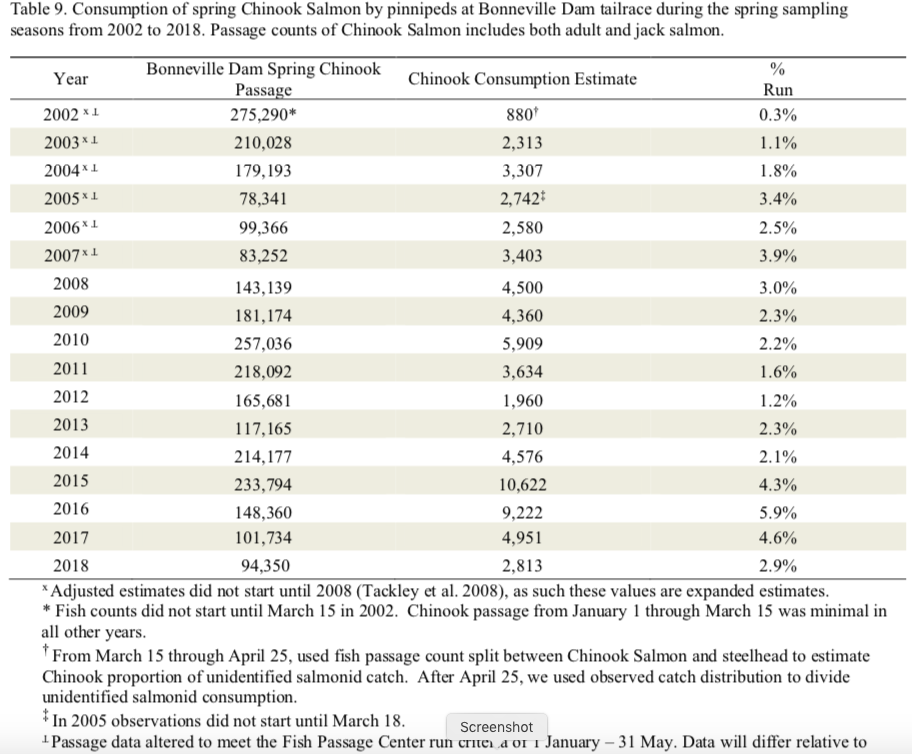forum
library
tutorial
contact

Orcas an Ironic Ally
for Salmon Recovery
by Carlisle Harrison
East Oregonian, April 24, 2019
|
the film forum library tutorial contact |

|
Orcas an Ironic Ally
by Carlisle Harrison
|

 That orcas should be allies in the effort to save salmon is the latest manifestation of our failure to manage predators in the Columbia River. For eons the Columbia had been the major producer of Chinook salmon.They were so readily available that the orcas off the West Coast became dependent upon them for their survival. These large salmon, for the most part, came from the upper reaches of the Columbia and Snake rivers.
That orcas should be allies in the effort to save salmon is the latest manifestation of our failure to manage predators in the Columbia River. For eons the Columbia had been the major producer of Chinook salmon.They were so readily available that the orcas off the West Coast became dependent upon them for their survival. These large salmon, for the most part, came from the upper reaches of the Columbia and Snake rivers.
Dams were constructed on the Snake River with fish being lost. Over the past 10 years the Columbia River Dart indicates there has been an average Chinook loss of 7% per year as the salmon moved from Ice Harbor Dam, through Lower Monument Dam, through Little Goose Dam and through Lower Granite Dam to the pool above. Though serious, it seems this loss would not warrant the expenditure of possibly billions to remove these dams.
The InterTribal Fish Commission conducted a study from 2010 to 2014 to assess the potential losses of spring Chinook in the area from the mouth of the Columbia to Bonneville Dam. Each year the losses steadily increased, from 20% the first year to 45% the final year of the study. During this time period the numbers of seals and sea lions increased markedly. Today that number has grown even faster. Genetic sampling showed that 68% of these tagged fish were destined for the upper reaches of the Columbia and Snake rivers.
Downstream smolts also suffered increased predation from increases in cormorant, tern and pelican populations.
The solution is as obvious today as it was in the 1950s and 1960s. At that time they did not allow seals and sea lions into the Columbia River. Yes, a few hundred were killed at a cost of a few thousand dollars. The state paid bounties and employed a seal hunter. The funding for this came from the fishermen and most of the bounty was paid to the fishermen.
I don't know if you recognize the irony of the following scenario. Orcas, a threatened species, need Chinook salmon, some of whom are threatened because they are being eaten by seals and sea lions, which are being protected by the Endangered Species Act -- a designation that should no longer apply because seals and sea lions have exceeded any need for protection from extinction.
learn more on topics covered in the film
see the video
read the script
learn the songs
discussion forum
